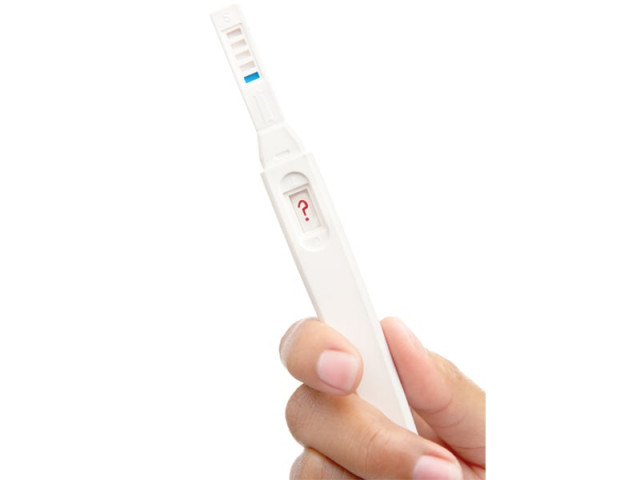Infertility: Myth buster
Sara Tanwir Ahmed, senior embryologist, busts the most common myths about infertility.

Sara Tanwir Ahmed, senior embryologist at the Tanwir Ahmed Medical Centre in Lahore, busts the most common myths about infertility.
Infertility, defined as the diminished ability to conceive a child, is a global phenomenon that affects more than 160 million people worldwide. In Pakistan, according to recent estimates, the incidence of infertility is an astounding 22%.
Due to the complex nature of infertility, its prevalence has given rise to many myths. These myths are quite common in a country like Pakistan, where people have preconceived notions based on socio-cultural customs and beliefs.
Myth: Infertility only occurs in women
Fact: Since the process of conception involves a man and a woman, both genders can be equally responsible for infertility. In fact, the male is responsible for 40 per cent of all cases of infertility; the female is responsible for 40 per cent of the cases, while the cause of the remaining 20 per cent cannot be explained.
The primary cause of infertility in men is disorders pertaining to sperm count and motility. Olligiospermia, astheozoospermia and azoospermia are the most prevalent disorders of sperm count and motility.
Polycystic ovarian syndrome (PCOS) is a common disorder responsible for infertility in women. Although polycystic ovaries produce multiple eggs every month, they are not the right size for ovulation because of hormonal imbalance, diets and insulin resistance. Other causes of infertility are tubule blockage, fibroids and cysts.
Myth: Fertility problems only begin after a certain age
Fact: Young and healthy individuals can be infertile too. Many people are born with fertility-hampering disorders, while others experience viral infections at a young age, like mumps and typhoid that affect their sperm count and motility.
However, fertility-related treatments have a higher chance of success when the patient is younger. For example, a female is born with all her eggs and as she ages, her eggs also age with her. Thus, the success of invitro fertilisation (IVF) treatment falls by half when the patient turns 35.
Myth: Only individuals with unhealthy lifestyles experience infertility
Fact: While having a healthy body and mind has its advantages when it comes to conception, this does not necessarily mean that healthy people are not infertile. The truth is that even healthy people who have regulated, balanced lifestyles can suffer from infertility.
Myth: Infertility is caused by stress
Fact: In very few cases, doctors may be unable to identify a physical/biological reason for infertility. In these instances, they are likely to consider stress as a causal factor. Stress can potentially wreak havoc on hormones — particularly reproductive hormones. However, physical factors — blocked tubes fibroids, low sperm count and motility — have a stronger link with infertility compared to merely stress.
Myth: If you have had children previously, you won’t suffer from infertility later on
Fact: There is a concept known as ‘secondary infertility’, which refers to the difficulties that previously fertile couples have in conception. There are various reasons for secondary infertility, such as irregular ovulation in women, reduced concentration of sperm in men or other hormonal changes that affect both men and women. Thus, there is absolutely no guarantee that just because you have successfully had children, you’ll continue procreating in the future.
Myth: The only successful treatment for infertility is surgery
Fact: Conventional fertility treatment includes drugs or surgery. However, newer developments within this field have given rise to a number of solutions collectively called ‘assisted reproductive technology’. These include treatments like intrauterine insemination (IUI) or Intra uterine inseminate, in which is a small tube is used to place specially washed sperm directly into the uterus.
Another popular treatment is IVF which entails the fertilisation of egg cells by sperm outside the body. The process involves hormonally manipulating the ovulatory process, removing the ova (eggs) from the woman’s ovaries and letting sperm fertilise them in a fluid medium. The fertilised egg is then transferred to the patient’s uterus.
Moreover, Intra cytoplasmic sperm injection (ICSI) is a revolutionary procedure through which men with low sperm count and motility can produce children. In this procedure, the sperm is directly injected inside the egg cells and once fertilisation takes place the embryos are transferred inside the woman’s body.
Published in The Express Tribune, Sunday Magazine, January 8th, 2012.



















COMMENTS
Comments are moderated and generally will be posted if they are on-topic and not abusive.
For more information, please see our Comments FAQ